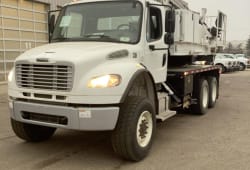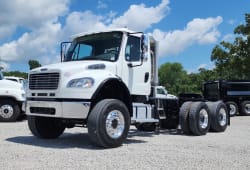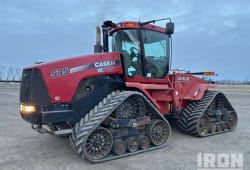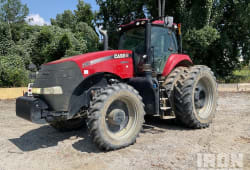Power Rakes: Revolutionizing the Way you Approach your Lawn Care and Landscaping tasks
8 Min read
)
October 16, 2023
If you're a homeowner, gardener, or landscaper, you've probably heard of power rakes. These tools are like a secret weapon for anyone involved in maintaining lawns and landscapes. They are incredibly versatile and have the potential to revolutionize the way you approach your lawn care and landscaping tasks. Here we'll walk you through everything you need to know about power rakes for lawn, from what they are to how to use them effectively.
What is a Power Rake?
:format(webp))
A power rake, also known as a dethatcher, is a specialized garden tool used for removing thatch, moss, and debris from the surface of your lawn. Thatch is a dense layer of dead grass, roots, and organic matter that accumulates on your lawn over time, obstructing the flow of air, water, and nutrients to the grassroots. A power rake's main purpose is to effectively dethatch your lawn and ensure your grass stays healthy and lush.
How Does a Power Rake Work?
They typically consist of a rotating set of blades or tines that dig into the thatch layer. These blades are attached to a motor, which propels them forward, effectively cutting through the thatch and pulling it to the surface. The removed thatch is then collected in a bag or deposited on the lawn surface for later cleanup. This process not only removes thatch but also aerates the soil, allowing your grass to breathe and grow better.
The Power Rake Unveiled
Power rakes come in various shapes and sizes, but they all share a common goal - rejuvenating your lawn. They are typically powered by gas engines or electric motors, which provide the necessary energy to drive the rotating tines. The height and depth of the tines can often be adjusted, allowing you to tailor the dethatching process to your specific lawn's needs. These machines can be walk-behind or tow-behind, depending on the size of the area you need to cover. Walk-behind power rakes for lawn are ideal for smaller lawns, while the tow-behind versions are suitable for larger landscapes.
The Versatility of Power Rakes
One of the most remarkable aspects of power rakes is their versatility. These machines are capable of performing several essential tasks, including dethatching, scarification, soil aeration, seedbed preparation, debris cleanup, and more. Let's delve deeper into some of these applications to better understand the full range of benefits power rakes offer.
Choosing the Right Power Rake
Selecting the right power rake is crucial for optimal lawn care results. The size of your lawn should be the initial consideration - smaller lawns benefit from walk-behind models, while larger areas may require tow-behind or tractor-mounted power rakes. Power source matters too, with electric models being eco-friendly and quieter, while gas-powered ones offer more power and mobility. Blade type is also significant, as power rakes for lawn come with various options for tasks like dethatching or scarification. Opt for a unit with adjustable depth settings, allowing precise control for different jobs. Durability is key, especially for frequent use or larger lawns. Lastly, align your choice with your budget, seeking a model that meets your needs without straining your finances.
How do you power-rake your Lawn?
To start power-raking your lawn effectively, it's important to first ensure that the area is clear of any debris, rocks, or obstacles that could hinder the machine's operation. This step is crucial to prevent any potential damage to both the power rake and your lawn. Once the area is clear, adjust the depth settings of the power rake according to the specific task at hand. For instance, for dethatching, a shallower setting is suitable. Begin power raking in a systematic pattern, making sure to overlap each pass slightly to ensure even coverage.
Keep a close eye on the collection bag, if your power rake is equipped with one, and empty it regularly to prevent clogging. Timing is also important; for dethatching, early spring or fall are ideal periods. Once the power raking is complete, be sure to give your lawn a thorough watering to aid in recovery from the process. Additionally, consider fertilizing and possibly overseeding, especially if a significant amount of thatch was removed.
The Power Rake vs. Dethatcher Debate
You may have heard the terms "power rake" and "dethatcher" used interchangeably, but they are not quite the same. The key difference lies in their functionality and the depth at which they work:
Power Rake: Power rakes are versatile machines that can handle various tasks, including dethatching, scarification, and more. They cut deeper into the soil, making them suitable for more intensive lawn care.
Dethatcher: Dethatchers are specialized machines designed primarily for removing thatch. They work closer to the surface and are less aggressive than power rakes. Dethatchers are ideal for maintaining a lawn with a thatch problem.
The choice between a power rake and a dethatcher depends on your lawn's specific needs. If you require more extensive lawn care, a power rake is the way to go. However, for routine dethatching, a dethatcher might be more appropriate.
Preparing for Power Raking
Make sure to prioritize safety by wearing the necessary gear, such as safety glasses, gloves, and durable footwear, before using the power rake. Before starting, clear the area of any potential hazards like rocks, toys, or branches to avoid damaging the equipment. Additionally, always check the weather conditions to steer clear of power raking on wet or rainy days, as it may not be as effective and could potentially harm your lawn. Before an operation, thoroughly inspect the power rake, ensuring all components are in working order and that there are no loose or damaged parts that could compromise its performance. This precautionary measure will help guarantee a smooth and safe power raking experience.
Post-Power Rake Care
Before embarking on power raking, it's crucial to prioritize safety. Equip yourself with the necessary protective gear, including safety glasses, gloves, and sturdy footwear. Prior to starting the task, carefully clear the area of any potential obstacles like rocks, toys, or branches, as they could lead to damage to both the power rake and your lawn. Additionally, always be mindful of weather conditions; refrain from power raking on wet or rainy days, as it may not only prove less effective but could also potentially harm your lawn. Finally, conduct a thorough inspection of the power rake, ensuring all its components are in proper working order and that there are no loose or damaged parts that could compromise the task at hand.
The Best Power Rake Applications
Power rakes serve as versatile tools in lawn care, offering a range of essential functions. Thatch removal, the elimination of dead grass and debris from the soil surface, is a fundamental task to enhance water and nutrient absorption and stimulate healthier grass growth. Additionally, power rakes for lawns excel at scarification, breaking compacted soil and removing thatch, thereby enhancing overall lawn health. They also facilitate soil aeration, creating pathways for air, water, and nutrients to reach the roots and promote vigorous growth. For those looking to reseed or establish a new lawn, power rakes aid in seedbed preparation by cultivating a loose and fertile surface. Furthermore, they swiftly clear leaves, sticks, and debris, making fall cleanup a breeze. Some models even combine dethatching and aeration functions, providing the best of both worlds in a single machine. When it's time for a complete lawn overhaul, power rakes help prepare the ground for a comprehensive lawn renovation. Finally, regular spring and fall maintenance with power raking prevents thatch buildup and maintains a healthy, vibrant lawn.
How Often Should You Power Rake Your Lawn?
The frequency of power raking your lawn depends on the specific needs and condition of your lawn. Generally, for routine maintenance, it's advisable to power rake annually, either in early spring or in the fall. However, if thatch buildup exceeds half an inch, more frequent dethatching may be necessary. For more intensive tasks like scarification and aeration, consider performing them bi-annually, typically in early to mid-spring and again in early fall. Keep in mind that debris cleanup, which can be another application of power raking, should be done as needed, especially during the fall season when leaves are abundant. If you're planning a comprehensive lawn renovation, power raking may be required every few years or as deemed necessary based on the condition of your lawn. It's important to assess your lawn's specific requirements and adjust the frequency of power raking accordingly to ensure its health and vitality.
Closing Up
Power rakes are powerful tools that can transform the health and appearance of your lawn. Their versatility makes them an invaluable addition to any lawn care arsenal. By understanding the different applications, choosing the right power rake for your lawn, and using it correctly, you can enjoy a vibrant, thriving lawn year-round. Now, armed with this knowledge, it's time to take action. Evaluate your lawn's needs, select the appropriate power rake, and embark on the journey to a healthier, more beautiful lawn. Your grass will thank you for it!

Mike Kennedy is Boom & Bucket's Marketplace Operations Manager, where he leads shipping, warranties, and post-sale operations to create a seamless buyer experience. As one of the company's earliest team members, Mike helped build the foundation of Boom & Bucket's operations and guided its growth through acquisition by RB Global. He is passionate about scaling marketplaces, solving operational challenges, and improving efficiency to deliver industry-leading results.














